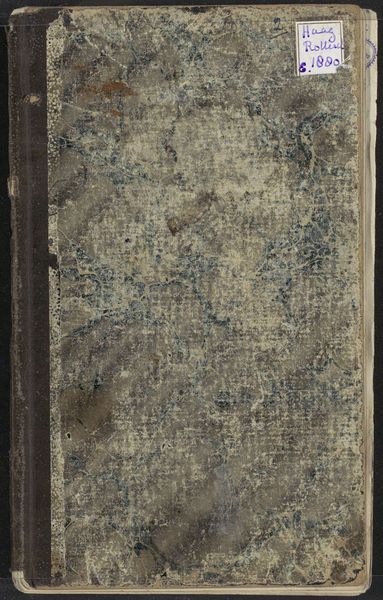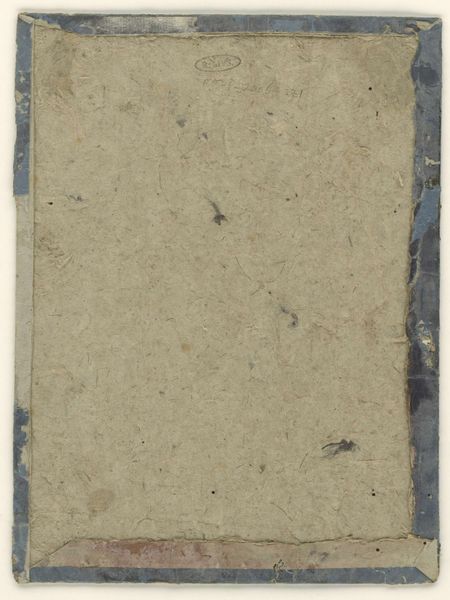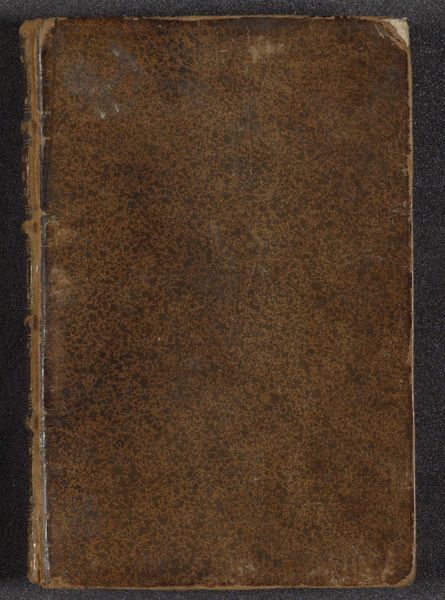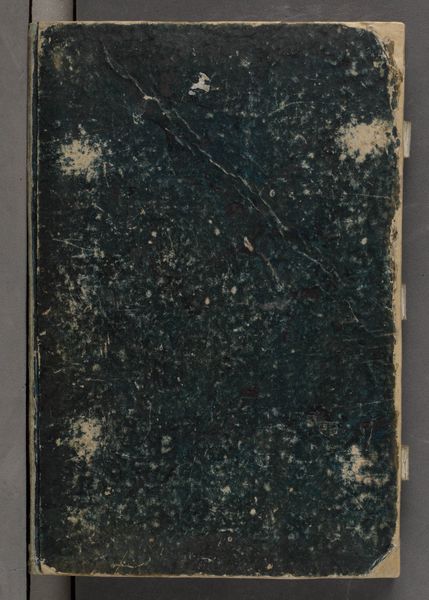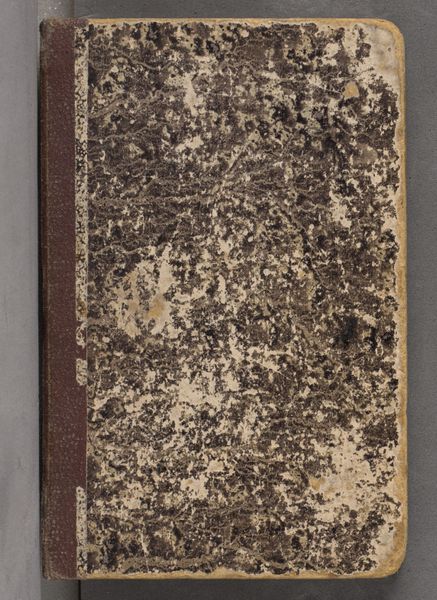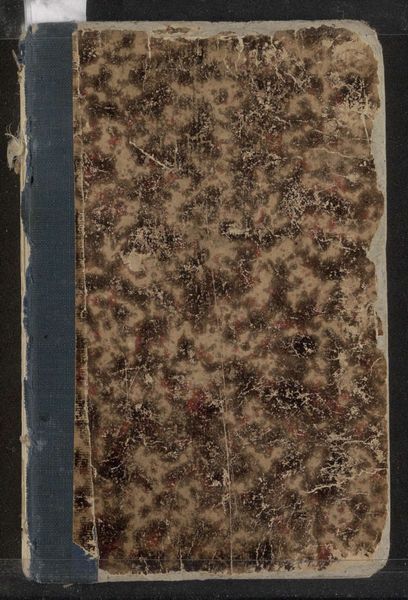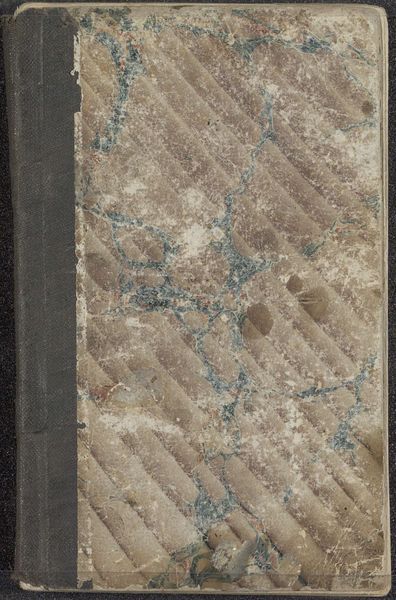
mixed-media, paper
#
mixed-media
#
book
#
textured
#
paper
#
mixed media
#
watercolor
Dimensions: height 210 mm, width 171 mm, thickness 15 mm, width 344 mm
Copyright: Rijks Museum: Open Domain
Curator: Standing before "Sketchbook with 87 Pages," created circa 1841-1853 by Johannes Tavenraat, one is immediately struck by its materiality. It is currently held at the Rijksmuseum, and consists of mixed media on paper, hinting at its diverse use and potential stories contained within. Editor: It definitely conveys a sense of accumulated history and secrets, doesn't it? The texture on the cover alone, the mottled blues and aged spots...it's whispering stories of labor, of where it’s been stored, handled, used, perhaps discarded then resurrected. Curator: Absolutely. As a personal object reflecting Tavenraat's creative process during a crucial period of artistic and social change, it's important to see the book as an intimate reflection of his lived experiences and artistic identity within the Dutch art scene of the mid-19th century. The materiality is also very revealing in the historical and socio-economic realities shaping artistic production at the time. The paper's quality, the binding techniques—these all point towards accessibility and class dynamics impacting artists. Editor: I find myself really focusing on that surface texture; it is calling attention to itself, creating a kind of haptic quality, an invite to engage that contrasts sharply with typical untouchable museum objects. Thinking about the consumption of images and artworks during that era—it would have had to be more carefully handled, treasured, given the difficulty of production and cost involved. Curator: Right, and think about what those sketches could depict: Landscapes influenced by the Hague School, portraits capturing the social hierarchy, or perhaps even critiques subtly challenging those structures. The artist's act of creating becomes intertwined with narratives of power, identity, and social mobility. Editor: Precisely. What’s exciting here is the intimacy the sketchbooks themselves convey – something more casual perhaps; an inside look to Tavenraat's production. It forces us to consider who had access to those artworks, that materiality and the conditions in which artistic creation happened. Curator: And that access, or lack thereof, reflects and reinforces existing societal norms. Considering the book in relation to issues of representation and inclusivity broadens its meaning, allowing us to explore the unspoken narratives surrounding artistic creation. Editor: Definitely; it's a compelling artifact of artistic practice, and I am left thinking about what sort of social statements can we excavate from something so commonplace like the notebook of an artist.
Comments
No comments
Be the first to comment and join the conversation on the ultimate creative platform.
